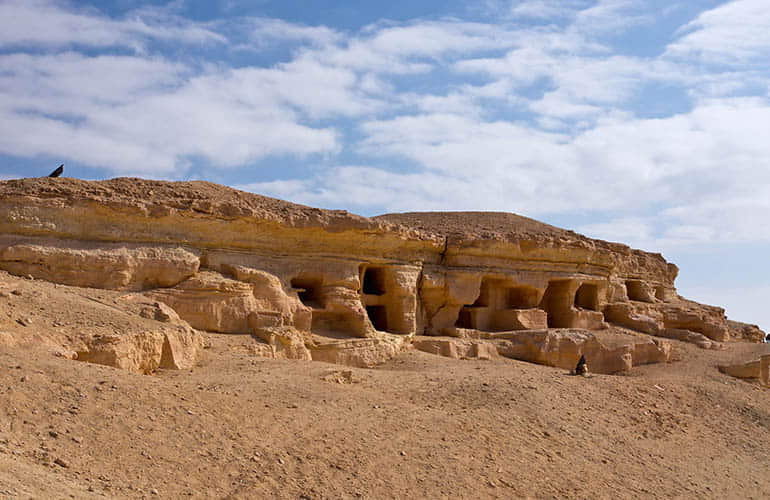The Facts of the Mountain of the Dead Tombs

The Mountain of the Dead , or Gebel al-Mawta, looks great from afar but is even more impressive from a distance. This is where the Siwans buried their loved ones for over 2000 years.
The mountain is really broken through, it must take centuries, as there was no more room for new graves. The lower part of the mountain has innumerable hills, with small passages to the graves.
Most of the graves belonged to families and were arranged according to the same patterns as graves throughout Egypt. The larger ones had ceremonial chambers, while the smaller ones were held outside the tomb.
The mountain holds a few really large tombs, full of murals that are as beautiful as the noble tombs of Luxor or Aswan. Unfortunately, there are strict rules for photographing here, so the best of the best was out of reach for me and my camera.
Over the years, everything has disappeared into the graves, leaving a crater landscape on a hill. You can climb up to get a fantastic and windy panorama over the oasis. All treasures have long since disappeared by grave robbers, although an ancient Siwa manuscript of a hidden grave mentions the treasure chamber of King Khuaybish, whose passage through a long forgotten grave can be found.
The Rocky hill has the shape of a would-be Mesa stacked and shaped with dozens of rock stacks. Its cave was made into a small necropolis for the Siwa people in ancient times, hence its name
The tomb itself contains several burial chambers, one of which was used as cat storage. Its most remarkable room, however, is its central chamber, which holds a huge sarcophagus several meters deep at one end opposite a large metal gate. In front of this sarcophagus stands a stele from the Old Kingdom on which a script from this period is inscribed in Egypt
A smaller cave, separated from the main tomb, was set up for the burial of the local Medjay and their relatives. Unlike its larger counterpart, it lacks ornamentation and is largely plain, with bare recesses on the walls serving as resting places for mummies – all without sarcophagi or other containers – similar to Roman catacombs. The exception is the tomb hall of Khemu, the son of Medjay Bayek, which contains a large alabaster coffin set in a niche and decorated with red handprints. On both sides, hundreds of wax candles were placed on stone tables carved from the walls.
Enjoy with this video about Mountain of the dead tombs:
Book your Travel Package now to know more about Egypt history.






